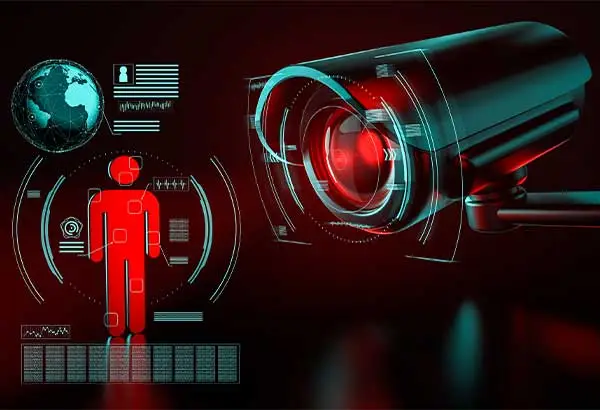In today’s world of surveillance, CCTV systems play an important role in security and monitoring. Nonetheless, one of the most important issues these systems face is their ability to distinguish between true threats and false alarms.
Not only does it threaten security, but it can also lead to needless disturbances that could waste resources.
This article will touch on the issues associated with this problem, such as ghosting on CCTV cameras and how technological developments can make CCTV systems more accurate.

The Rise of CCTV Surveillance
CCTV cameras are commonplace in every public or commercial area and in homes. They aim to discourage crime, provide evidence of events occurring, and improve security in general. Although these systems have been successful in these goals, they could be better.
The Challenge of False Alarms
False alarms are events or incidents that trigger an alert or response from the CCTV system but do not pose any threat. These can be triggered by a variety of factors, including:
- Environmental Factors: Weather conditions, lighting changes, and other environmental factors can cause false alarms as cameras struggle to adapt.
- Technical Glitches: Malfunctions in cameras or the surveillance infrastructure can lead to false alerts.
- Intrusive Wildlife: Birds, animals, and insects may inadvertently trigger motion sensors.
- Human Activity: Innocent activities like playing with children, pedestrians, or employees moving about during non-business hours can lead to false alarms.
Ghosting on CCTV Cameras
One of the more interesting challenges CCTV systems encounter is the occurrence of “ghosting.” “Ghosting” happens when individuals intentionally obscure their faces or identities to evade detection by surveillance cameras. Such an act can result in the system labeling them as possible threats and triggering unnecessary alarms.
The Motivation Behind Ghosting
People engage in ghosting for various reasons, from privacy concerns to illegal activities. Some individuals might not want their movements recorded due to surveillance and privacy invasion concerns. On the other hand, criminals may ghost to avoid identification when engaging in unlawful activities.
How to prevent Ghosting on CCTV Cameras
To prevent ghosting on CCTV cameras, ensure proper lighting in the surveillance area to minimize reflections and shadows. Regularly clean camera lenses and adjust their angles to reduce glare and artifacts. Use high-quality cameras with advanced image stabilization technology, and consider upgrading to digital or IP cameras for improved image clarity.
Lastly, maintain a consistent frame rate and resolution settings to minimize motion blur and ensure accurate recordings.
Impact on Accuracy
Ghosting is a problem that affects the accuracy of a CCTV system. It is difficult to establish the intent of people deliberately trying to obscure their images from cameras or whether they are dangerous. In turn, that might increase the number of false alarms, thereby stressing security resources and lowering surveillance efficiency.
Advancements in Technology
While ghosting and false alarms are challenging, technological advancements offer promising solutions. Here are some key technologies and strategies that can improve CCTV accuracy:
1. Artificial Intelligence (AI) and Machine Learning
AI-powered algorithms can help CCTV systems distinguish between genuine threats and false alarms. These systems can be trained to recognize various factors, such as human behavior patterns and typical environmental conditions, to reduce false alerts.
2. Facial Recognition
Enhanced facial recognition technology can help identify individuals even when they attempt to obscure their faces. Algorithms can analyze other identifying features, such as body shape, clothing, or gait, to improve accuracy.
3. Improved Image Sensors
Upgraded image sensors with higher resolution and better low-light capabilities can capture clearer images, making it harder for individuals to ghost or evade detection.
4. Enhanced Analytics
Advanced analytics can detect abnormal behavior patterns, such as loitering or sudden movements, to trigger alerts only when suspicious activity occurs.
5. Privacy Filters and Consent-Based Surveillance
Implementing privacy filters and ensuring surveillance is conducted with consent can address privacy concerns and reduce the motivation for ghosting.
Conclusion
For CCTV systems in the ever-changing environment of surveillance technology, the challenge of differentiating between real threats and false alarms is crucial. Ghosting on CCTV cameras, where people intentionally cover their faces, makes this problem even more difficult. However, the technological advancements in AI, facial recognition, and sensors provide some hope that these challenges may be overcome.
Improving CCTV systems’ accuracy relieves the security guards from false alarms and saves other resources from real threats. It is important to strike the right balance between security and privacy. A safer and more efficient surveillance environment for everyone will be created with responsible and ethical use of technology.




